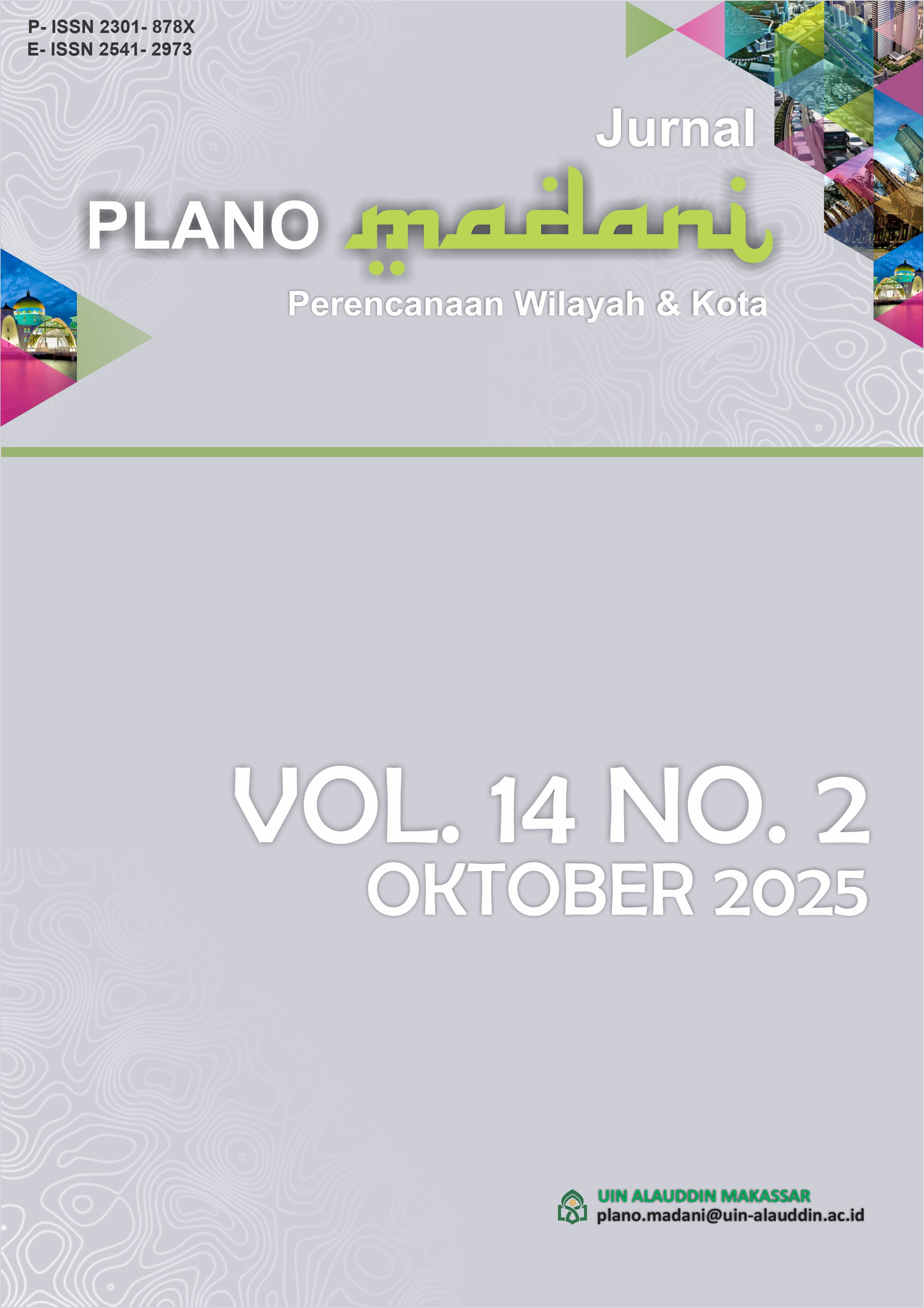IDENTIFICATION OF KAILI TRIBE CULTURE THAT SHAPES THE IMAGE OF PALU CITY IN TAWAELI DISTRICT
Keywords:
City Image, The Culture of the Kaili Tribe, Tawaeli DistrictAbstract
The Kaili tribe plays a significant role in shaping the image of Palu City through various cultural aspects such as art, customs, language, and traditions. The culture of the Kaili people is reflected in the city’s architecture, spatial arrangement, and daily activities of its residents. Based on these conditions, the researcher is interested in identifying the cultural elements of the Kaili tribe within the spatial structure of Palu City by observing their activity patterns and gathering places that contribute to the formation of the city’s image.
This study aims to identify the role of Kaili culture in shaping the image of Palu City, focusing on the Tawaeli District, specifically the Panau and Baiya sub-districts. A qualitative descriptive method was employed, utilizing an ethnographic approach to identify cultural symbols and their relationship to the image of Palu City, which were then mapped through the behavioral mapping method.
The results of the study show that the path elements, such as routes once used for traditional rituals, though many of these rituals are no longer practiced, still function as connections between key points in the community’s social life. The edge elements, such as the Tawaeli River and the coastal boundary of Palu Bay, serve as physical separators regulating activities between the land and sea areas. The district elements indicate a spatial division based on social status and dominant economic activities within each area. The node elements, such as traditional markets and monuments, serve as centers of economic and social activity, with monuments representing the identity of the Kaili people. Furthermore, landmark elements, such as the Tawaeli King’s Cemetery Park and traditional houses, play a vital role as sources of pride and the preservation of cultural values.
Downloads
References
Fitria, T. A. (2018). Pengaruh Seting Ruang Terhadap Perilaku Pengguna Dengan Pendekatan Behavioral Mapping. Jurnal Arsitektur Dan Perencanaan, 1(2), 183–206.
Lasimpo, G. (2019). Mitigasi Bencana Berbasis Pengalaman Suku Kaili di Lembah Palu. KOMIU (Kelompok Muda Peduli Hutan).
Pendidikan dan Kebudayaan, D. (1983). Sistem Gotong Royong Dalam Masyarakat Pedesaan Daerah Sulawesi Tengah. Departemen Pendidikan dan Kebudayaan.
Siddiq, M. (2019). Etnografi sebagai Teori dan Mode. E-Journal UIN Jakarta, XVIII, 23–48.
Zubaidi, F. (2009). Arsitektur Kaili Sebagai Proses Dan Produk Vernakular. Jurnal Ruang, 1.
Downloads
Published
How to Cite
Issue
Section
License
Copyright (c) 2025 Deltri Dikwardi Eisenring, Supriadi Takwim, Muhammad Ryan, Aang Fransisko

This work is licensed under a Creative Commons Attribution-NonCommercial-ShareAlike 4.0 International License.
By Submitting your manuscript to our journal, your are following Copyright & License








